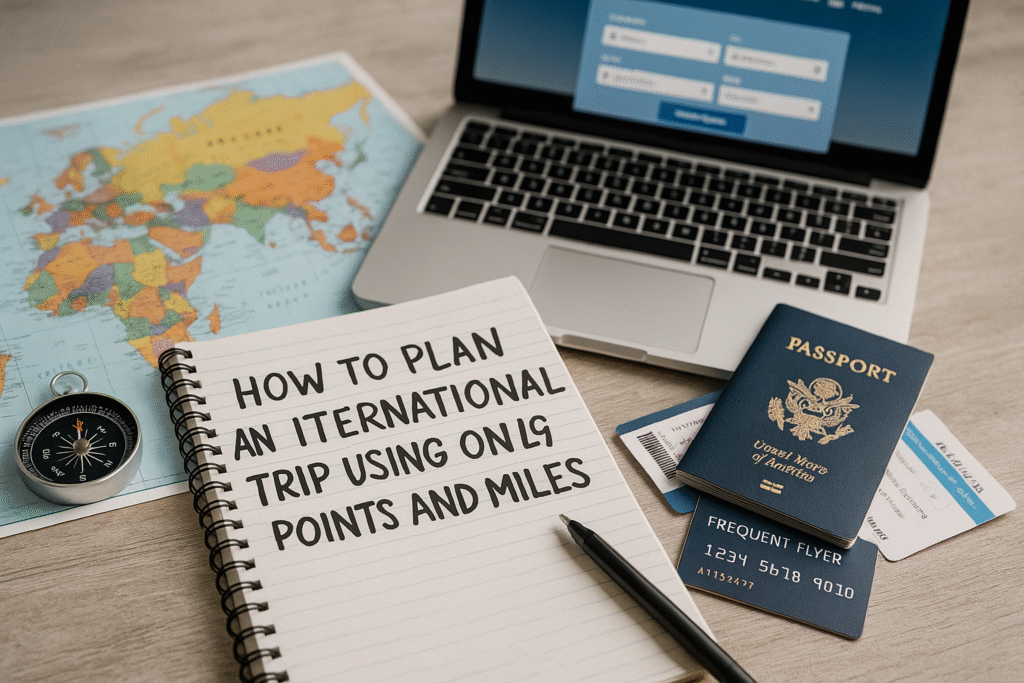In the world of travel rewards, promotions are constant — offering everything from 100% point transfer bonuses to discounted redemptions, elite status accelerators, and limited-time perks. But beneath the flashy headlines and countdown timers lies a crucial layer most people skip: the fine print.
Not all promotions are created equal, and some can actually result in lost value or wasted points if misunderstood. That’s why it’s essential to learn how to analyze a promotion’s terms before taking action. In this article, you’ll gain the skills to read, evaluate, and act on promotions with clarity and confidence.
Why It’s Important to Read the Fine Print
Promotions are marketing tools. Their goal is to drive action — sign-ups, spending, transfers, and bookings. While the headline might say “Earn Double Miles!” or “Get 40,000 Bonus Points,” the terms and conditions tell the real story.
Ignoring the fine print can lead to:
- Missing eligibility criteria
- Earning fewer points than expected
- Losing flexibility on travel changes
- Committing to long-term fees or subscriptions
- Making non-refundable purchases based on incorrect assumptions
Smart travelers know that the value of a promotion lies not in its percentage, but in its structure.
Where to Find the Terms and What to Look For
Step 1: Locate the Full Promotion Rules
Always look for a link titled:
- Terms and Conditions
- Regras da Promoção
- Saiba mais
- Details
- FAQ
- Campaign Rules
If the promotion doesn’t include a link to full terms, that’s already a red flag.
Step 2: Check Eligibility Requirements
Common filters include:
- Geography: Some promotions are limited to residents of certain countries or regions
- Loyalty tier: Only available to club members or elite tiers
- Cardholder status: Only valid for users of specific credit cards
- Past participation: May be restricted to “new users” or first-time transfers
- Targeted users only: Even if public, some promos apply only to those who received an email invite
✅ Tip: If in doubt, log in to your account and try to activate the promotion — if you can’t, you’re likely ineligible.
Step 3: Understand the Promo Mechanics
This is the most important part of the analysis. Ask:
- What action triggers the bonus?
- Transfer points
- Make a booking
- Subscribe to a club
- Spend a minimum amount
- Complete an activity within a time frame
- How is the bonus calculated?
- Percentage (e.g., 100% bonus)
- Fixed (e.g., 10,000 miles)
- Tiered (e.g., different levels for different spend)
- Is activation required?
- Some promos need a button click or email confirmation before qualifying
- What are the minimums and maximums?
- Minimum spend or transfer thresholds
- Bonus caps (e.g., max 20,000 bonus miles per user)
✅ Tip: Avoid making assumptions — always verify exact requirements.
Step 4: Look at Validity Dates and Deadlines
Promotions are time-bound. Pay attention to:
- Start and end date
- Time zone (many follow GMT, not local time)
- Booking date vs. travel date (some promos require both within the period)
- Bonus posting date (some bonuses post in 24h, others after 90+ days)
Step 5: Assess Bonus Delivery Terms
How and when do you actually receive the bonus?
- Instantly (at point of transfer or booking)?
- Delayed (e.g., within 30 or 90 days)?
- In stages (e.g., 2,000 miles per month for 6 months)?
- With restrictions (e.g., bonus expires after 30 days if not used)?
✅ Tip: If the timeline is too long, ask yourself if you’ll still value the bonus when it arrives.
Step 6: Identify Any Restrictions or Exclusions
This is where most surprises happen. Look out for:
- Ineligible booking classes or rates (e.g., award tickets, codeshare flights, prepaid hotel rates)
- Exclusion of partner airlines
- Redemptions not allowed for bonus
- Club benefits only active after full billing cycle
- Points that don’t count toward elite status
✅ Tip: If you’re relying on a promotion to qualify for elite status or trigger another benefit, confirm if bonus points count as qualifying.
Common Red Flags to Watch For
- “Up to” language: “Earn up to 40,000 points” often means only a few will qualify for the top bonus
- “Bonus will be credited after 120 days”: Delays increase the chance of plans changing
- “No changes or refunds allowed”: Be cautious unless you’re 100% committed
- “First X users only”: Hard to verify, and often creates false urgency
- Complex tiers: Promotions that require multiple actions or stages usually benefit the company more than the user
How to Calculate the True Value of a Promotion
Use a simple formula:
(Total Reward – Cost) ÷ Effort = Real Value
Let’s break it down:
- Total Reward: Points or miles earned, converted to estimated monetary value
- Cost: Any money, points, or opportunity cost you’re giving up
- Effort: Number of steps, risk, time to wait, or uncertainty involved
Example:
- Transfer 30,000 Livelo points to Smiles with 100% bonus
- You’ll get 60,000 miles
- Estimated value per mile: $0.015
- Value: $900 worth of Smiles miles
- Cost: 30,000 Livelo points (worth $450)
- Effort: Low — 1 transfer action
Real value = High → ✅ Take the promotion
Now compare:
- Subscribe to Club for 12 months
- Get 40,000 miles in total (posted monthly)
- Cost: $30/month = $360/year
- Value: $600 in miles, but spread across 12 months
- Risk: May cancel early and lose bonus
Real value = Medium to Low → ❌ Only worth it if you’ll use the club often
How to Track and Organize Promotions You’re Considering
Use a promo tracker spreadsheet with the following columns:
- Promotion Name
- Source (Livelo, Smiles, etc.)
- Activation Date
- Expiry Date
- Requirements
- Bonus Details
- Action Taken (yes/no)
- Bonus Posted (yes/no + date)
- Notes
Review weekly to avoid missing deadlines or repeating mistakes.
Real-Life Example: Good Promo vs. Misleading Promo
Promo A (Good):
- TudoAzul 100% transfer bonus from Livelo
- Valid for all users
- Activation required
- Posts in 24h
- No caps
- Used to book domestic flight at 1.8 cents per point
✅ Outcome: High value, fast, transparent
Promo B (Misleading):
- LATAM Pass “up to 50% off award tickets”
- Only applied to off-peak Tuesday flights
- Only for domestic Argentina routes
- High taxes
- Booking required through app only
- Difficult to find availability
❌ Outcome: Time wasted, zero bookings completed
Final Thoughts: Don’t Let the Headline Fool You
Learning how to analyze a promotion’s terms before taking action is one of the most powerful tools in your travel arsenal. The real value of a promo isn’t in the bold font — it’s in the fine print.
Take the time to read, ask questions, and think critically before moving your points, subscribing to a service, or clicking “book now.” You’ll avoid costly mistakes, earn more consistently, and turn every promotion into a real win — not a marketing trick.
Because in travel, being informed earns more than rushing ever will.
Elaine A. da Silva is a Brazilian travel and finance enthusiast, best known as the creator of the blog Dica das Milhas. With a strong background in personal finance and a passion for exploring smart travel strategies, she specializes in simplifying the world of airline miles and travel rewards for everyday people. Through her blog, Elaine shares practical tips, insider knowledge, and step-by-step guides to help readers save money and travel more efficiently using loyalty programs and credit card points.







